Pavlova. Dreamy. A fluffy cloud. A soft pillow. A joy to behold.
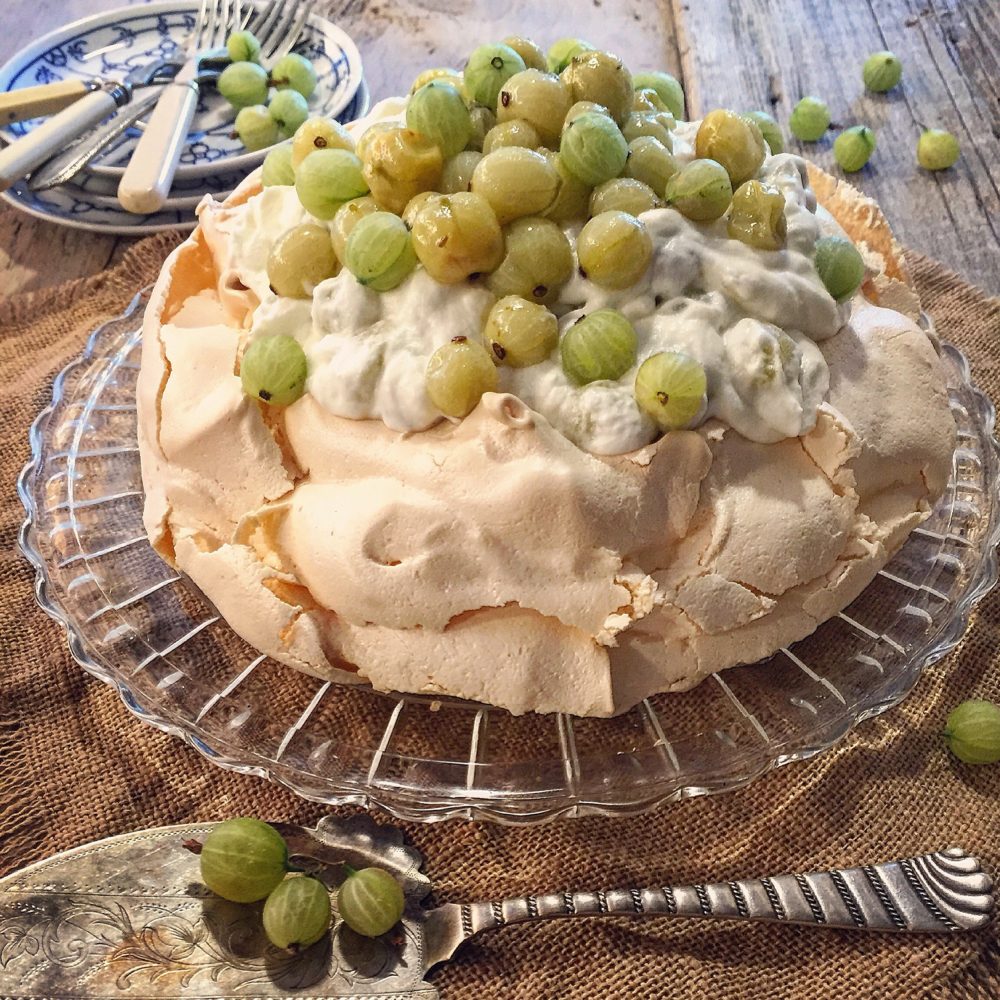 And the perfect base for almost any fruit and whipped cream topping. It can be simple, it can be over the top.
And the perfect base for almost any fruit and whipped cream topping. It can be simple, it can be over the top.
I remember the first time I had a true Pavlova. My sister had been living in Australia for about six months, back in the mid-80’s. I had headed down under and joined her for a few months before she would return to Canada, leaving me to live life in Sydney for another 10 months on my own.
One of the first meals she prepared for me and a few other house guests was a pavlova. It was topped with passionfruit. Both were new to me. Well, this exotic combination of textures and flavours was a party in my mouth! I was totally hooked, both by the tangy, sour passionfruit, the luscious whipped cream (I’m German, we have whipped cream in our blood, right after beer) but most especially by that lovely meringue. Crispy on the outside, almost like a marshmallow on the inside.
Thus began a life long love affair with meringue. In all its forms. My meringue Forgotten Cookies (check out the archives!) are a simple version of a pavlova and come together in a snap. More fussy but still easy are mini pavlovas or meringues that make the best little individual desserts for a dinner party. And then the king of kings, or should I say, queen of queens (since tradition has it that the dessert was created for ballerina Anna Pavlova, who was visiting Australia) the Pavlova. An uber large chewy, soft centred meringue nest, egg whites, sugar and a stabilizer get together to slowly bake off (almost dry out) until you are left with the perfect pillow to gently lay a mound of whipped cream and fruit on.
Beating egg whites can be a royal pain. So many rules, so many variables. Never try to create a meringue on a humid day. Only use a stainless, glass or copper bowl. Make sure your eggs are at room temperature. Never add the sugar too early. Don’t let any fat (from the egg yolk, or your fingers) get near the eggs. Make sure all utensils are uber clean and dry.
Here’s the reason for never choosing a humid day to suddenly get a craving for meringue: Since meringue is mostly air (whipped into the egg whites) if the air in the kitchen that is being whipped into the eggs contains water (humidity), that water (which we can’t see but is there!) will cause the egg whites to become liquidy- a runny mess. They will only whip so far, but the heaviness of the water will halt any further foam (air bubbles) from surrounding the egg white proteins. I have totally learned this one the hard way!!
But when you get all the variables lined up correctly, it really becomes the perfect storm of a process.
Low oven temperature is another key. Better low and slow. Too hot and it will shatter before the insides are cooked through. Taken out too early, and even if it looked fabulous in the oven, the shock of cold air will again cause shattering. And after saying all of the above, some shattering and cracks will develop- so much air is whipped into those egg whites, that there are bound to be a few hairline fissures, or even some edges cracking off. But heh, it isn’t the foundation for a 30 story building, so a couple of cracks aren’t the end of the world. Adds character. And even the most perfect pavlova will soon buckle under the weight of what is put on top. So don’t freak out if there is cracking- it will still taste amazing. I have had the most beautiful perfectly smooth pavlovas crack just before serving. Oh well. This one is no different. So, should I even post this? Oh heck, it still tastes divine, so please forgive the appearance of this meringue. A real friend won’t hold it against me.
A great way to bake off a pavlova is to have the oven heated to 300F in the evening. Place the baking sheet with your pavlova on it into the oven. Drop the temperature to 250F and bake for 1 hour and 15 minutes. Turn off the oven and go to bed. And don’t open the door until the morning. You will be holding your breath, until you see the finished pavlova. Did it crack? Is it still intact? Oh who cares! As long as the centre is marshmallowy and chewy, you have made the perfect textured pavlova. This is key: a true pavlova has the marshmallow centre. If you see below, despite the outside fissures, the inside is the perfect marshmallow-y goodness- I was thrilled with it. If you don’t have this, you have basically baked a dry, crisp meringue, not a pavlova.
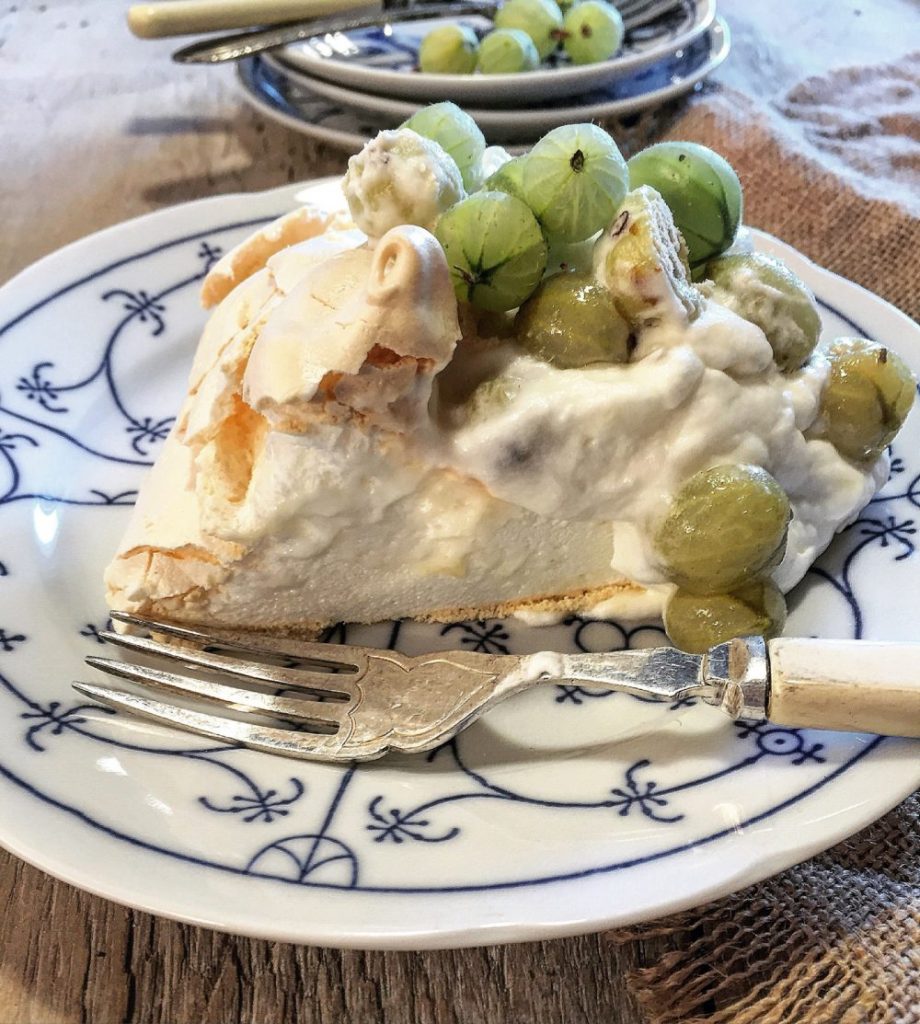
Filling a Pavlova: Once it has cooled, you can store a meringue over night (in an airtight container) and then fill the next day. Or else start it early in the day to ensure that it has cooled down completely, before topping it and serving it.
Since most Pavlova meringues are formed with a shallow ‘nest’ in the middle before baking, once cooled, it is perfectly ready to accept whipped cream and fruit without it spilling over. Fillings start with the classic sweetened and flavoured whipping cream. Then macerated fruit or cooked fruit compote of some kind is drizzled over the whipped cream. The interpretations of these two components of a pavlova or endless. So have fun with it.
This one that I baked last week has elderflower cordial and brandy enhanced whipping cream, with a compote of gently cooked gooseberries. Gooseberries are a childhood favourite of mine. My mom had planted a currant bush and a gooseberry bush right near each other in our backyard. Since they both seemed to ripen at the same time, I remember plopping myself between the two bushes and just plucking those tiny jewels and popping them into my mouth. Tangy, sour, juicy, just what I loved. But as the years went by, and I was living on my own, I found out that obtaining currants or gooseberries was not that easy. Not as popular or accessible in North America as I would have thought. And truly, they are berries that are more loved in Europe. But lately now I’m seeing that the times are changing, and the farmers markets are featuring them again. One of my favourite farmers markets to visit in the summer has these glorious gems, as well as elderberries, so I’m all set!
Having said all of the above, if your pavlova shatters on you, despite all your best efforts (it happens) step in the Eton Mess. I am sure this lovely English dessert was invented by someone whose pavlova shattered in front of them and they had to scramble. Quick thinking took all those lovely ingredients and presented them in trifle form. And that’s perfectly acceptable. So just spoon that crumbled pavlova base into dessert cups, add a layer of whipped cream or the fool that I made above, add some fruit or compote, and repeat. It’s really just another version of a trifle. And it’s official. Don’t tell your guests anything: what you bring out in dessert cups is what you MEANT to bring out!!
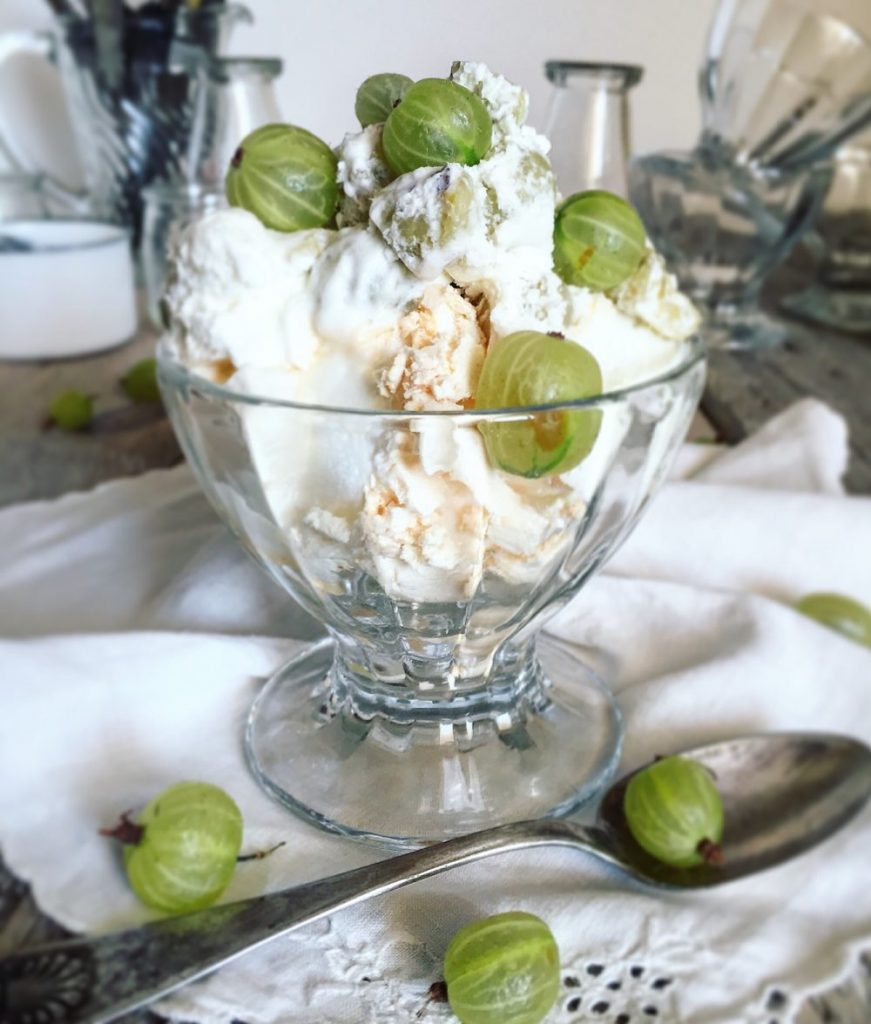
I hope you will try a pavlova. You could easily take this recipe and create six smaller ones (I would use two baking sheets in this case) And if you can find gooseberries, please give this unsung, but childhood favourite, a try. And think of me as you cut into this gorgeous marshmallow goodness! Speaking of ‘cutting into’ unlike as with any cake, especially cheesecake, use a knife dipped into cold water for each slice.
Love Jen
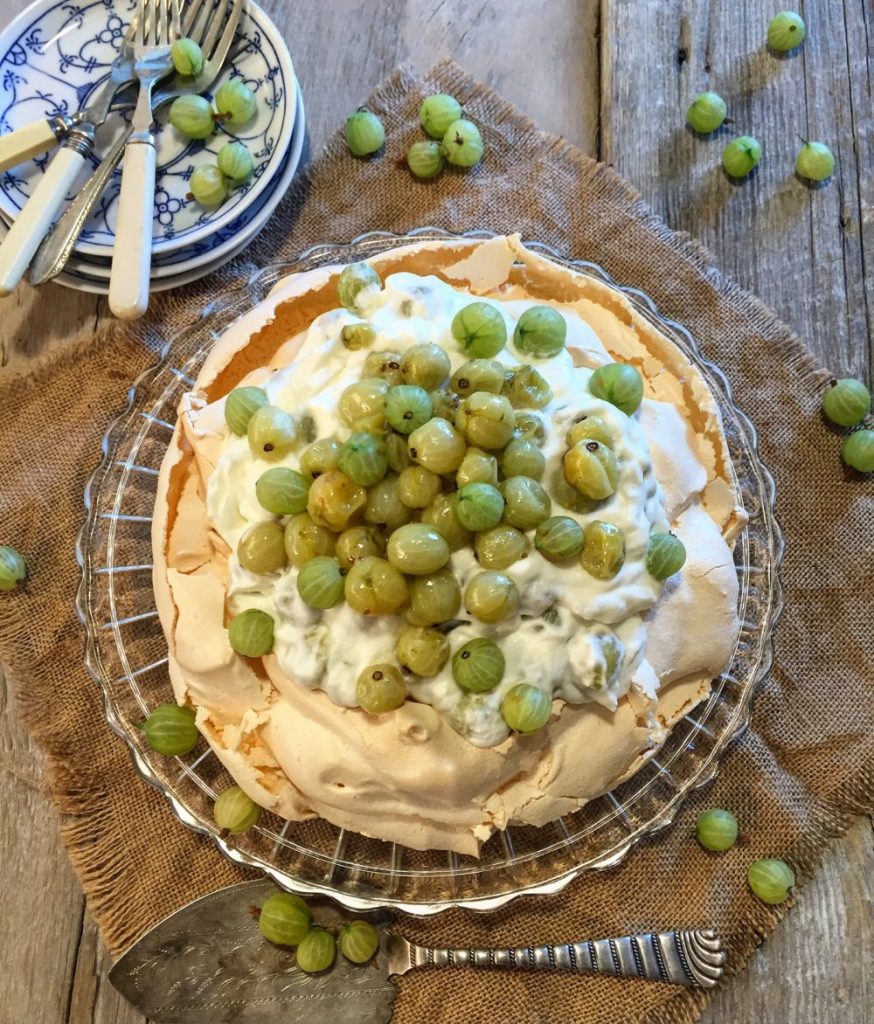
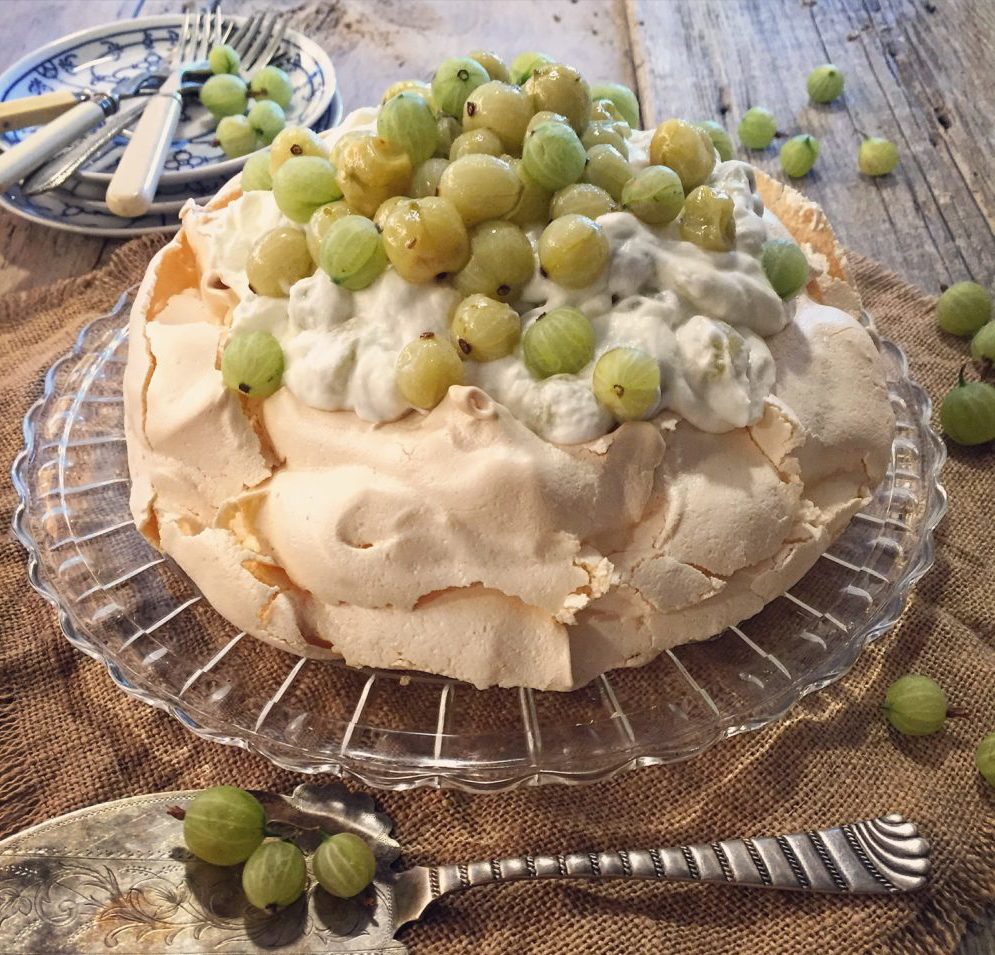
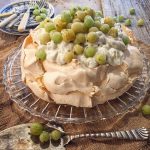
PILLOWY PAVLOVA WITH GOOSEBERRY AND ELDERFLOWER FOOL
Ingredients
- 4 large , free-range egg whites, room temperature
- 1 rounded tsp cornstarch
- 1 cup (200g) golden caster sugar
- 1 tsp vinegar (preferably fruit, or cider)
FOR THE FILLING
- 1 lb (500g) gooseberries, topped, tailed (I use scissors for this) and rinsed
- 1/2 cup (100g) refined caster sugar, plus 2 tbsp
- 1 tbsp brandy
- juice of ½ lemon
- 3 tbsp elderflower cordial
- 1/2 cup (approx 142ml) carton double cream If you can't find 40% double cream (like Devon Cream) you can use 35%
Instructions
-
Preheat the oven to 300F (150C/gas 2/fan 130C). Line a heavy baking sheet with baking parchment and draw a 91⁄2in (24 cm) circle on it.
-
Put the egg whites into a very large, grease-free bowl or bowl of a stand mixer.
-
Mix the cornstarch and sugar together.
-
Using the stand mixer or electric beaters, whisk until soft peaks form. At this point start adding the sugar mixture, 1 tbsp at a time. Mix until thick and glossy, and stands up in firm peaks. Add the vinegar, and continue whisking until incorporated.
-
Spread the meringue over the circle, leaving a 1⁄2in (1 cm) border. Using the back of a large spoon, make a shallow dip in the middle for the filling, then build up the sides as high as you can, using a palette knife to make swirly peaks on top.
-
Bake the meringue case on the middle shelf for 20 minutes. Reduce to 275F (140C/gas 1/fan 120C) and bake for 40 minutes (1 hour in a gas oven). Turn off the oven but leave the meringue inside for 1-3 hours, with the door closed.
FOOL
-
Best to do this ahead or after the pavlova is cooled. Do not cook this while the pavlova is in the oven, resting (the heat can affect the cooling process in the oven.
-
Gently cook the gooseberries and 1/2 cup (100g/4oz) sugar, covered, over a low heat for 15 minutes, stirring once or twice. When they are soft, drain (discarding the juices) and leave to cool thoroughly.
-
To make the fool, whisk the brandy, lemon juice and 2 tbsp sugar in a large bowl for 1 minute. Pour in the elderflower cordial and cream and whisk until mixture forms soft peaks. Fold in the drained fruit .
-
Remove the meringue from the parchment, then put it on a large flat plate or cake stand. Pile in the fool filling and serve immediately.
Recipe Notes
You may want to spray the parchment lightly with a non-stick cooking spray and sprinkle it with powdered sugar. This should allow for easier release of the pavlova from the parchment after cooling.
MAKING AHEAD Make the meringue case up to 24 hours ahead, wrap loosely in foil and keep cool. Cook the gooseberries up to 48 hours ahead and chill. The fool can be made up to 12 hours ahead and chilled.
Adapted from BBC Good Food, Gooseberry Syllabub Pavlova, recipe by Ruth Watson
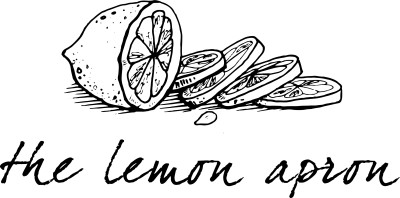
Nice to see you like my recipe enough to give it exactly as I wrote it some 20 years ago!
Hi Ruth, thanks so much for reaching out to me! This is one of my early blog posts, so had I known your name, I would have even you even more specific credit. I was just so happy to find a recipe that combined two of my favourite things: pavlovas and gooseberries!! Gooseberries will always remind me of my childhood, and I had my first pavlova over 30 years ago. Your recipe is a dream to use, why would I change it!? Love Jen
Hi Ruth, me again! Thanks again for commenting. It made me realize that in a recent transfer of data to a new server, many photos have been affected. This gave me the opportunity to update and correct the blog post. I’ve also added your name to the recipe credit! Have a beautiful day. Love Jen
I don’t like commenting on a recipe if I haven’t followed it to the T but in this case I couldn’t fine fresh or frozen gooseberries so ended up with tinned. The ones I grow here in USA get demolished by chipmunks before I can harvest them. I cut the sugar way back because of this, but I think the addition of brandy is really good.
Love the flavour combination and took me back home but your speculation about origins is wrong! Eton Mess first mentioned in 1893, Pavolova dessert invented in the 1920s.
Hi Rona, hehe, thanks for the insight on Eton Mess. I was just kind of joshing, since a broken up pavlova takes on the look of an Eton Mess. But I’m happy you were able to find some gooseberries, I have never seen tinned gooseberries before! Love Jen